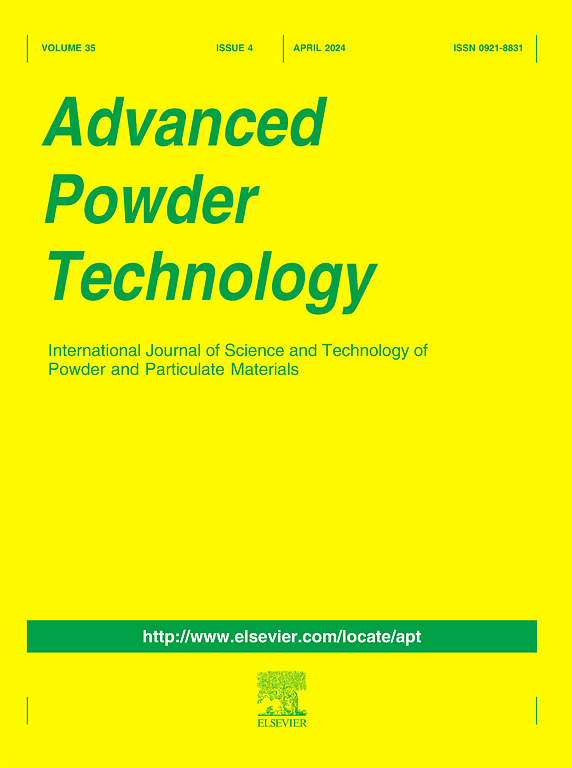A Voronoi tessellation-based CFD-DEM porosity model for fluidized bed modelling
IF 4.2
2区 工程技术
Q2 ENGINEERING, CHEMICAL
引用次数: 0
Abstract
The porosity model is a critical component of CFD-DEM calculations, particularly in scenarios where the CFD mesh size cannot be adjusted flexibly. Voronoi tessellation has been demonstrated as an efficient method for estimating the porosity of individual particles. This study introduces a flexible implementation of the Voronoi porosity model, extending its application to broader chemical engineering scenarios and enabling large-scale computations for irregular devices. The model leverages CFD mesh cell nodes and the functions in Voro++ package, addressing previous limitations with point cloud generation. Evaluations across various particle size distributions and fluidised beds show that the model generates smooth porosity fields, remains independent of mesh grid density, and significantly improves drag force calculation accuracy in polydisperse particle systems. Although computational costs may rise due to frequent Voronoi tessellation updates, reducing the update frequency can help reduce these costs.

基于Voronoi镶嵌的流化床孔隙度CFD-DEM模型
孔隙度模型是CFD- dem计算的关键组成部分,特别是在CFD网格尺寸无法灵活调整的情况下。Voronoi镶嵌已被证明是估计单个颗粒孔隙率的有效方法。该研究引入了Voronoi孔隙度模型的灵活实现,将其应用扩展到更广泛的化学工程场景,并能够对不规则设备进行大规模计算。该模型利用CFD网格单元节点和voro++软件包中的功能,解决了以前在点云生成方面的限制。对不同粒径分布和流化床的评估表明,该模型产生了光滑的孔隙度场,不受网格密度的影响,并显著提高了多分散颗粒系统的阻力计算精度。虽然计算成本可能会由于频繁的Voronoi镶嵌更新而增加,但降低更新频率可以帮助降低这些成本。
本文章由计算机程序翻译,如有差异,请以英文原文为准。
求助全文
约1分钟内获得全文
求助全文
来源期刊

Advanced Powder Technology
工程技术-工程:化工
CiteScore
9.50
自引率
7.70%
发文量
424
审稿时长
55 days
期刊介绍:
The aim of Advanced Powder Technology is to meet the demand for an international journal that integrates all aspects of science and technology research on powder and particulate materials. The journal fulfills this purpose by publishing original research papers, rapid communications, reviews, and translated articles by prominent researchers worldwide.
The editorial work of Advanced Powder Technology, which was founded as the International Journal of the Society of Powder Technology, Japan, is now shared by distinguished board members, who operate in a unique framework designed to respond to the increasing global demand for articles on not only powder and particles, but also on various materials produced from them.
Advanced Powder Technology covers various areas, but a discussion of powder and particles is required in articles. Topics include: Production of powder and particulate materials in gases and liquids(nanoparticles, fine ceramics, pharmaceuticals, novel functional materials, etc.); Aerosol and colloidal processing; Powder and particle characterization; Dynamics and phenomena; Calculation and simulation (CFD, DEM, Monte Carlo method, population balance, etc.); Measurement and control of powder processes; Particle modification; Comminution; Powder handling and operations (storage, transport, granulation, separation, fluidization, etc.)
 求助内容:
求助内容: 应助结果提醒方式:
应助结果提醒方式:


